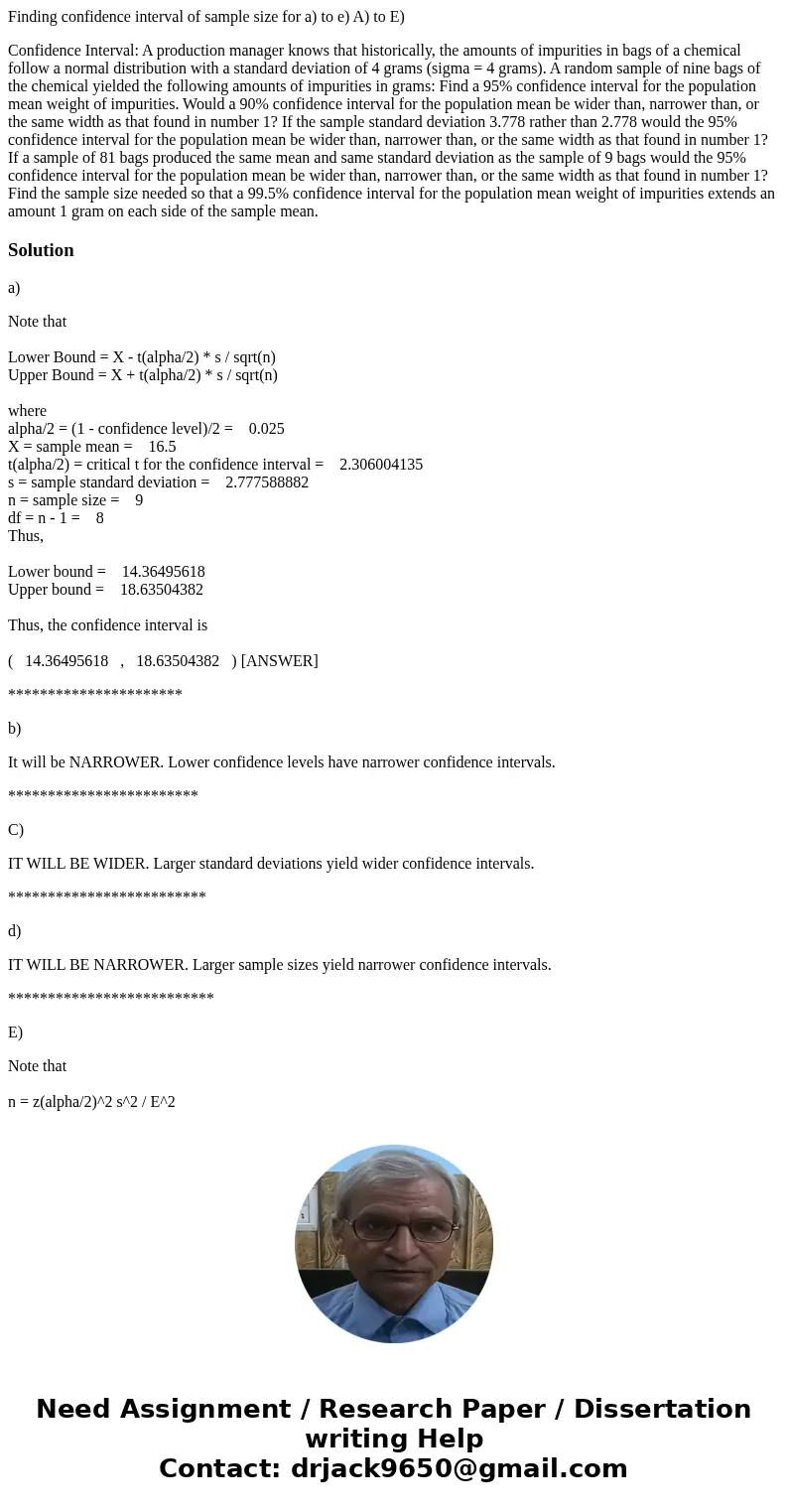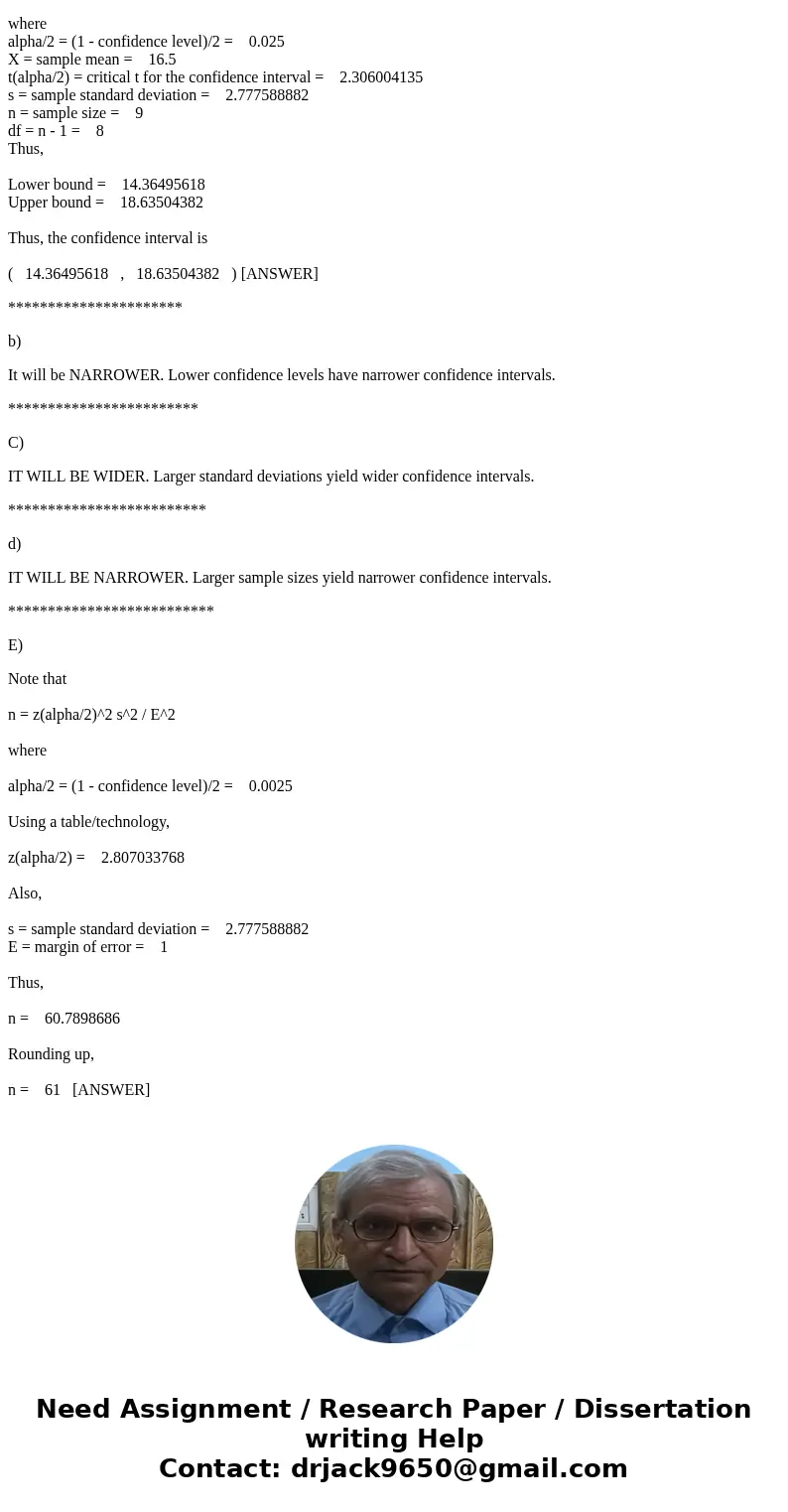Finding confidence interval of sample size for a to e A to E
Finding confidence interval of sample size for a) to e) A) to E)
Confidence Interval: A production manager knows that historically, the amounts of impurities in bags of a chemical follow a normal distribution with a standard deviation of 4 grams (sigma = 4 grams). A random sample of nine bags of the chemical yielded the following amounts of impurities in grams: Find a 95% confidence interval for the population mean weight of impurities. Would a 90% confidence interval for the population mean be wider than, narrower than, or the same width as that found in number 1? If the sample standard deviation 3.778 rather than 2.778 would the 95% confidence interval for the population mean be wider than, narrower than, or the same width as that found in number 1? If a sample of 81 bags produced the same mean and same standard deviation as the sample of 9 bags would the 95% confidence interval for the population mean be wider than, narrower than, or the same width as that found in number 1? Find the sample size needed so that a 99.5% confidence interval for the population mean weight of impurities extends an amount 1 gram on each side of the sample mean.Solution
a)
Note that
Lower Bound = X - t(alpha/2) * s / sqrt(n)
Upper Bound = X + t(alpha/2) * s / sqrt(n)
where
alpha/2 = (1 - confidence level)/2 = 0.025
X = sample mean = 16.5
t(alpha/2) = critical t for the confidence interval = 2.306004135
s = sample standard deviation = 2.777588882
n = sample size = 9
df = n - 1 = 8
Thus,
Lower bound = 14.36495618
Upper bound = 18.63504382
Thus, the confidence interval is
( 14.36495618 , 18.63504382 ) [ANSWER]
**********************
b)
It will be NARROWER. Lower confidence levels have narrower confidence intervals.
************************
C)
IT WILL BE WIDER. Larger standard deviations yield wider confidence intervals.
*************************
d)
IT WILL BE NARROWER. Larger sample sizes yield narrower confidence intervals.
**************************
E)
Note that
n = z(alpha/2)^2 s^2 / E^2
where
alpha/2 = (1 - confidence level)/2 = 0.0025
Using a table/technology,
z(alpha/2) = 2.807033768
Also,
s = sample standard deviation = 2.777588882
E = margin of error = 1
Thus,
n = 60.7898686
Rounding up,
n = 61 [ANSWER]


 Homework Sourse
Homework Sourse